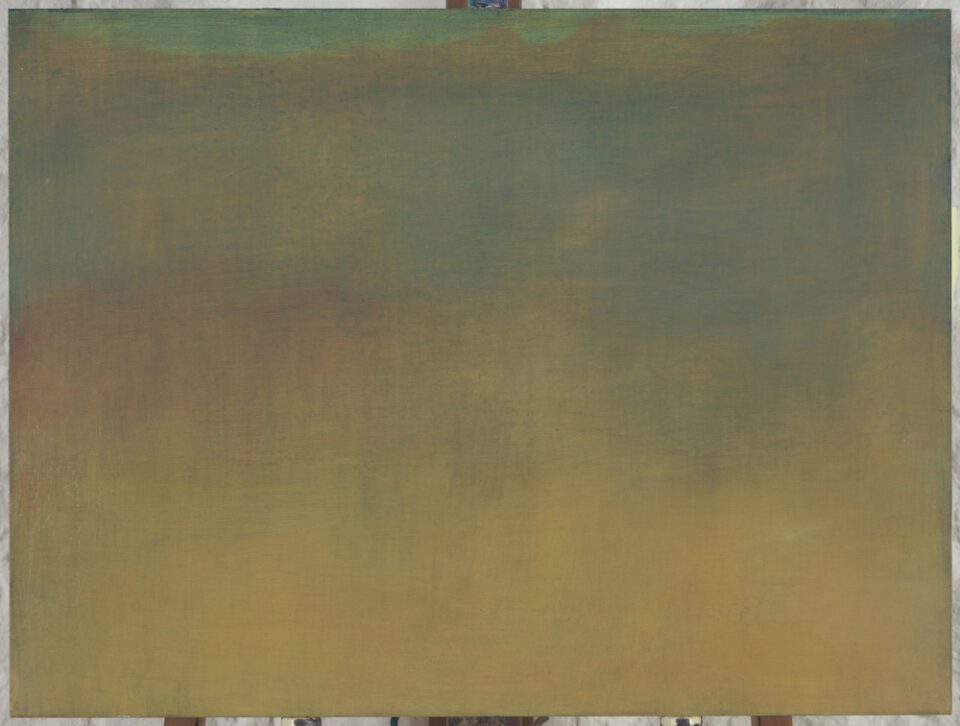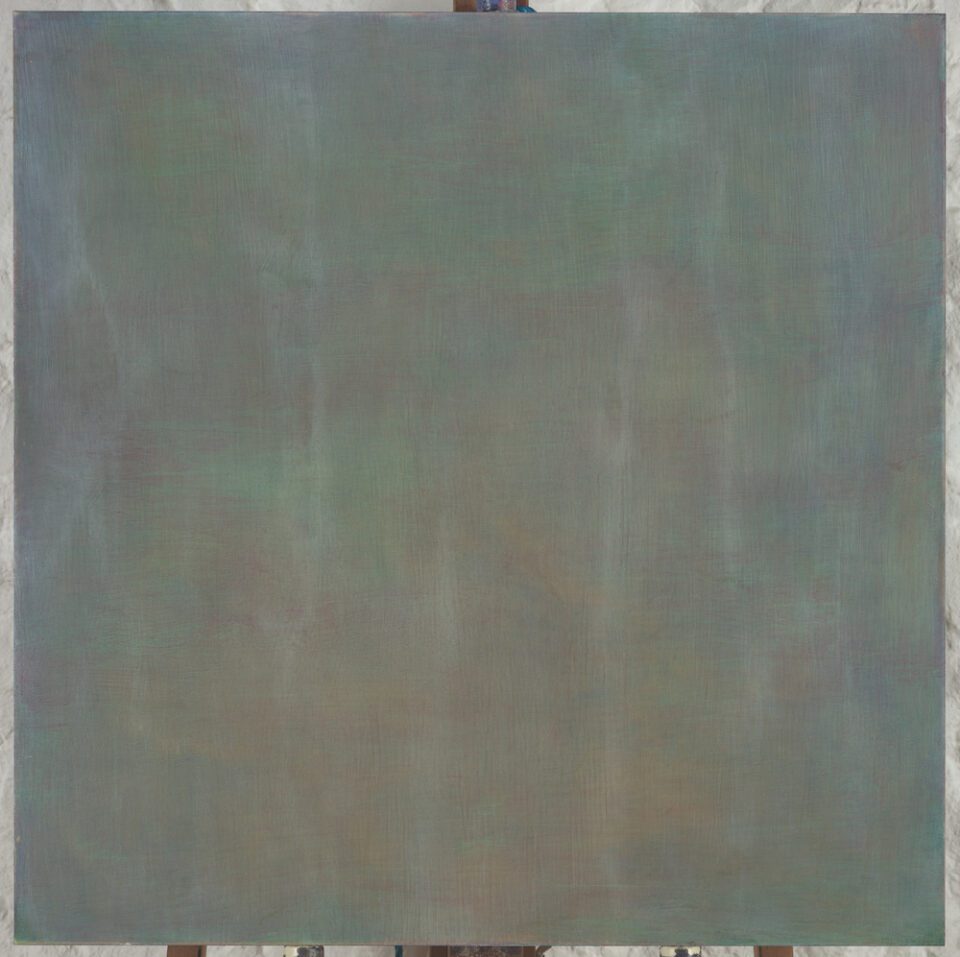What does it mean for an artwork to be ‘sublime’? The word is Latin in origin, translating as something ‘set or raised aloft, high up’. Elsewhere, it’s defined as the quality of ‘greatness: physical, moral, intellectual, metaphysical, aesthetic, spiritual or artistic.’ Perhaps the best-known explanation comes from 18th century philosopher Edmund Burke (1729-1797), who saw it as a kind of pleasurable terror, often associated with dramatic, romantic scenes in nature. Today, the splendour of Earth’s wild places is under threat; the climate crisis, environmental destruction and human activity has put these spaces in grave peril. Additionally, our experiences of landscapes have become increasingly mediated. We can visit them online at the click of a button – through image searches, viral videos or virtual reality headsets.

Siemon Scamell-Katz, whose paintings are currently on view in Norfolk, is interested in the ‘vanishing sublime’: a contemporary approach to the concept. Splitting his time between the UK and France, the artist creates paintings inspired by landscapes in Europe and the USA. Rejecting realistic painting or photography as “a false record of experiential reality”, he has thrown out everything representative and iconographic. Instead, he focuses on the “fundamental feeling of a landscape,” with mesmerising washes of blue, orange, ochre, green and white. The pictures possess a kind of magnetism; it’s a sensation which has been compared to that of viewing a Mark Rothko piece. Colours seem to shift in and out of focus, drawing viewers deep into the canvas. There are 32 images on display in this latest exhibition, blending elements of abstraction and impressionism.

Scamell-Katz’s practice is based on an understanding of the way humans see. When he was in his mid-20s, he launched a business that pioneered eye tracking, a technique which allowed him to understand how we interpret what we see. Studying how eyes travel across an image, he discovered that we don’t focus on the whole picture. Instead, we pick out small elements of a scene, trying to identify what it is we’re looking at. During this process, each person fills in the gaps with what they already know – memories, representations and symbols. In other words, we never actually see what is in front of us. “These are my interpretation of the landscape as sublime,” says Scamell-Katz. “That there are no marks or signs that represent them – merely the temporal depiction of sensation – is partly to illustrate that by the time that my lifespan ends, these landscapes will also be gone.”
Vanishing Sublime is at Black Barn Contemporary, Norfolk until 19 September. Find out more here.
All images courtesy Siemon Scamell-Katz.
1. Painting 18,05, Oil and Enamel on Aluminium, 610x610mm.
2. Painting 18,04, Oil and Enamel on Aluminium, 610x455mm.
3. Installation View of Vanishing Sublime.




